1918 Dated - Aisne Offensive Sector - A.E.F. Used Artillery Map - "Cessièrs" - Signed 1st Lieut.. E. V. McKey Jr. - 134th Field Artillery

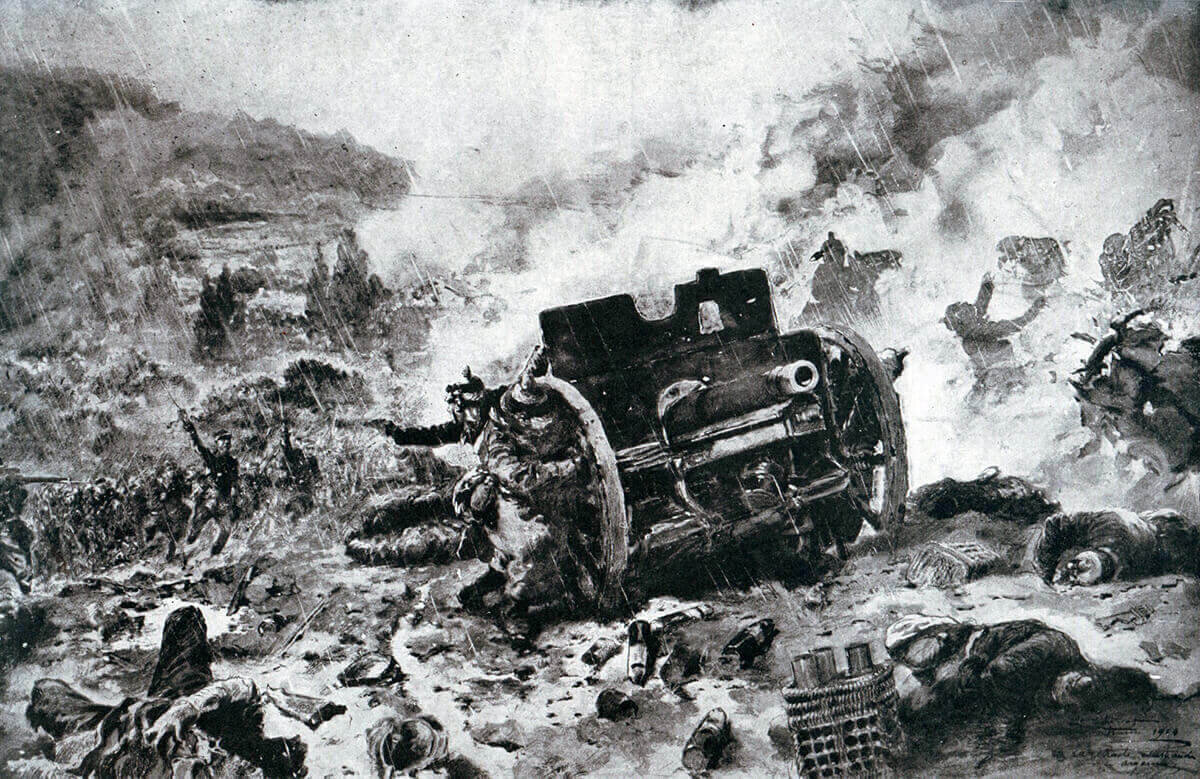





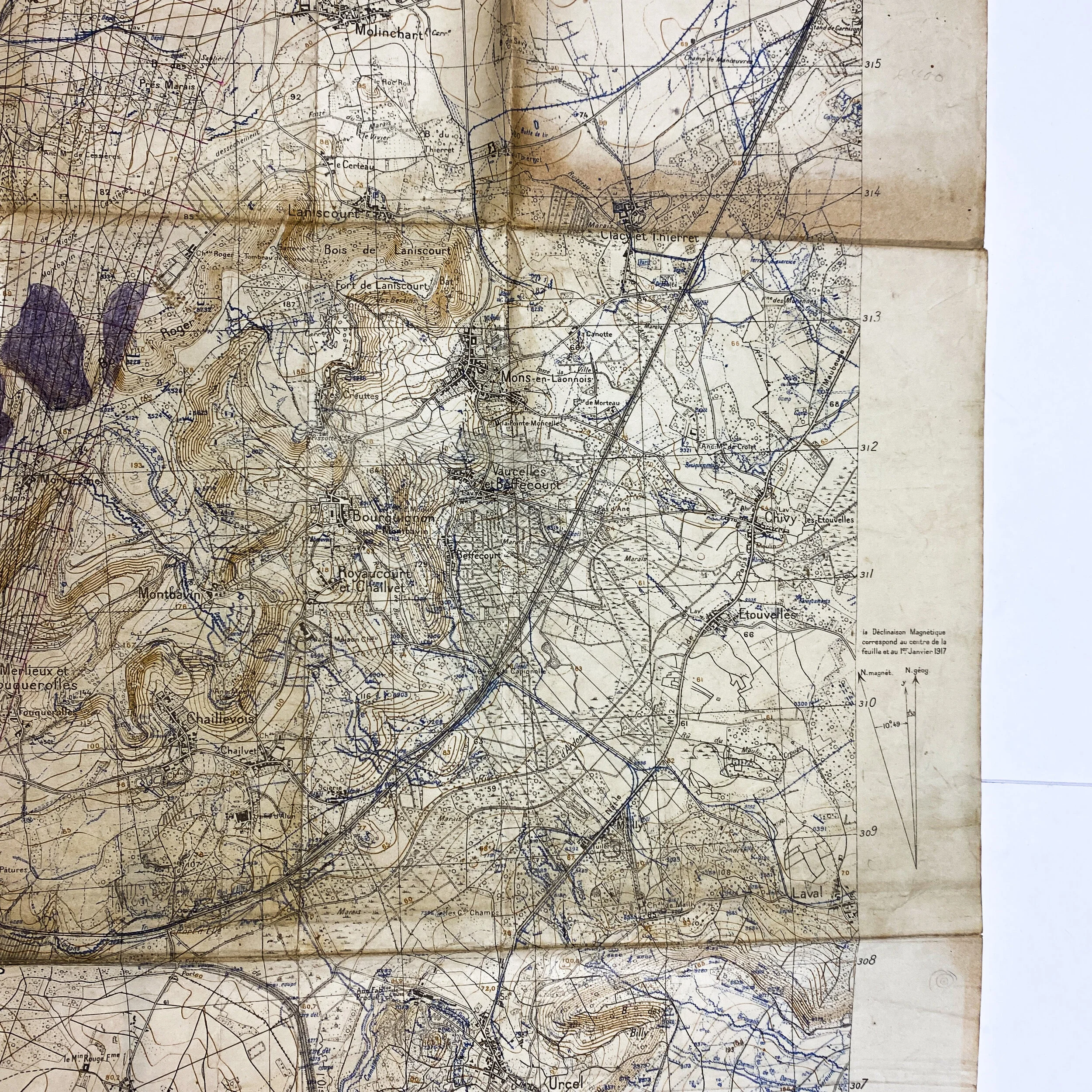
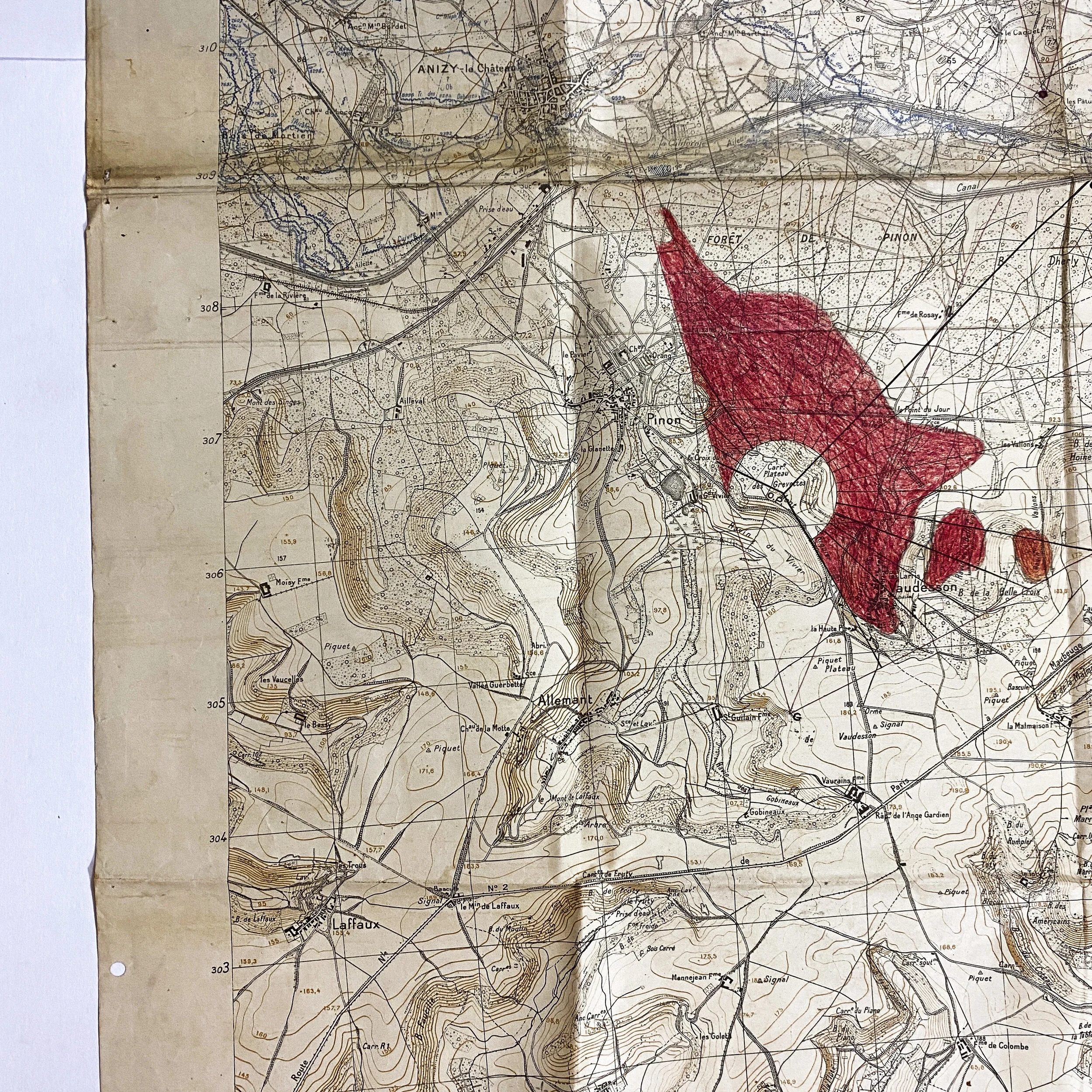



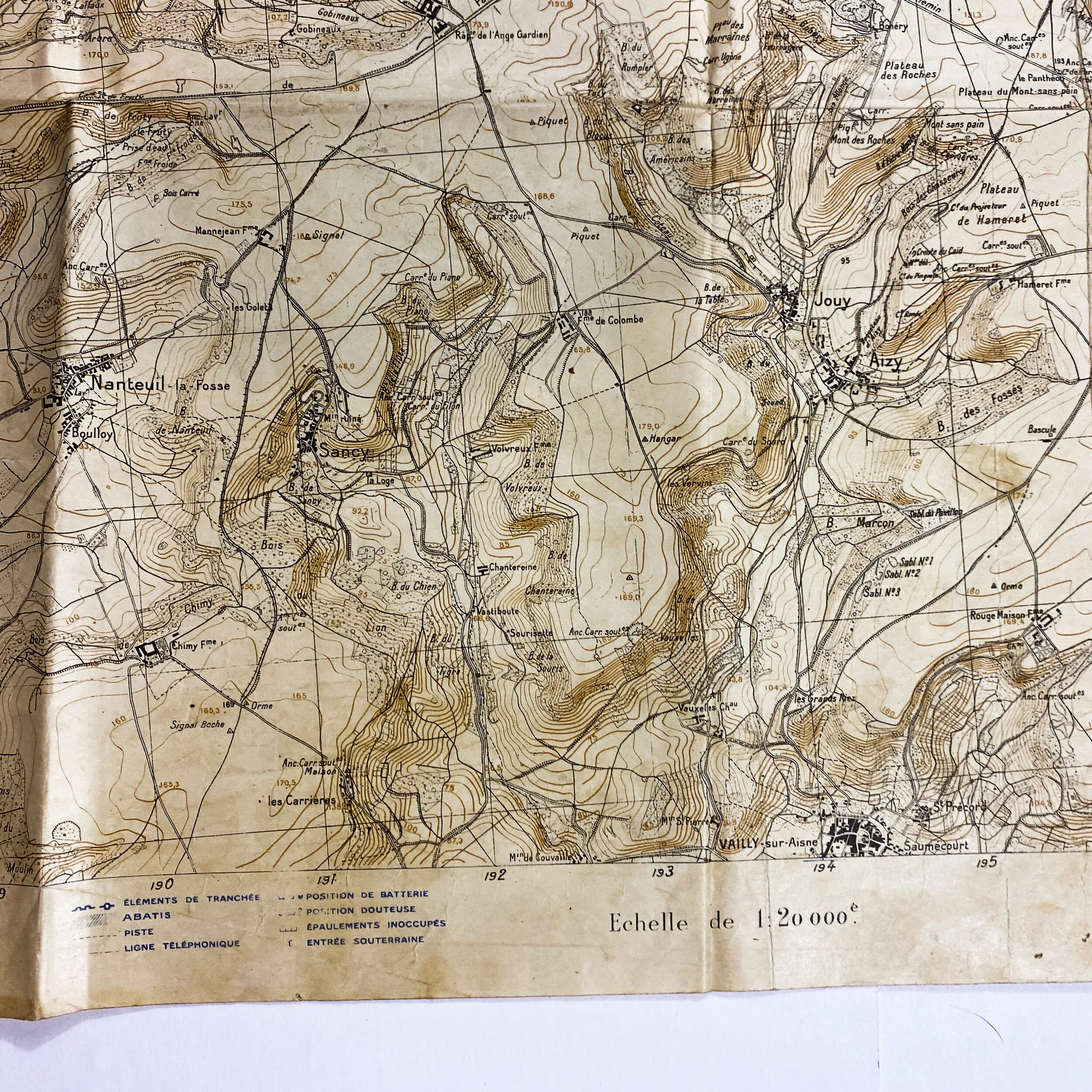







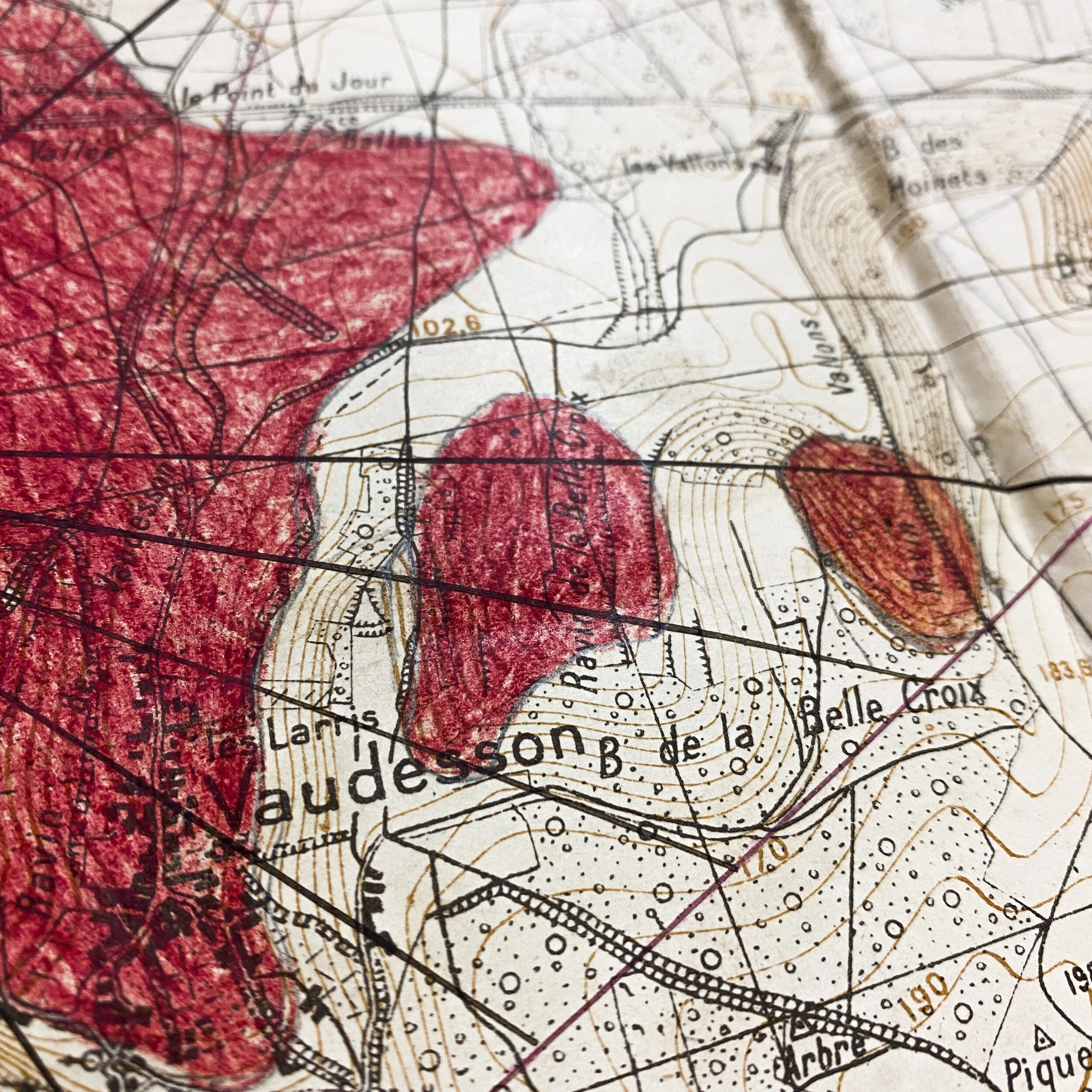

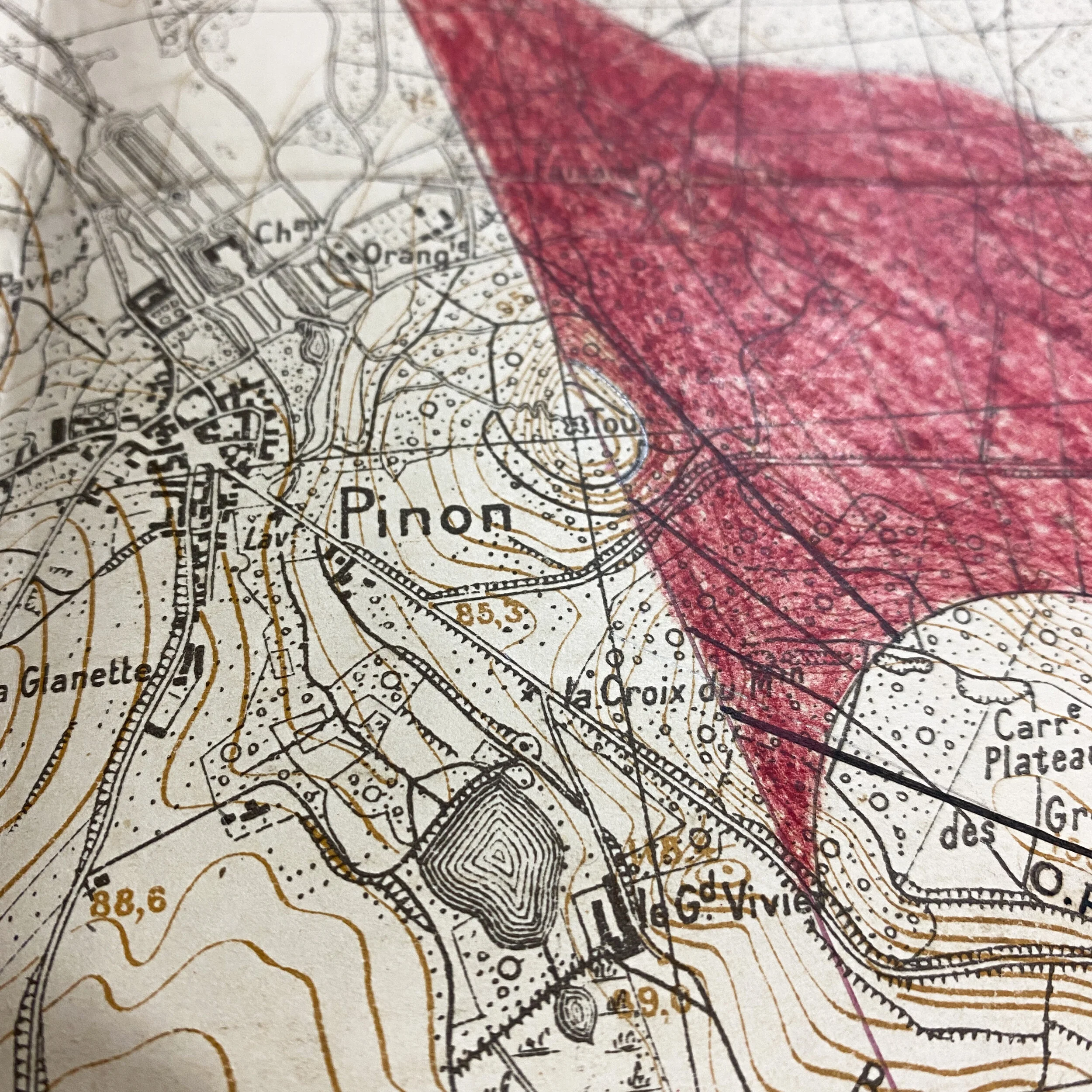















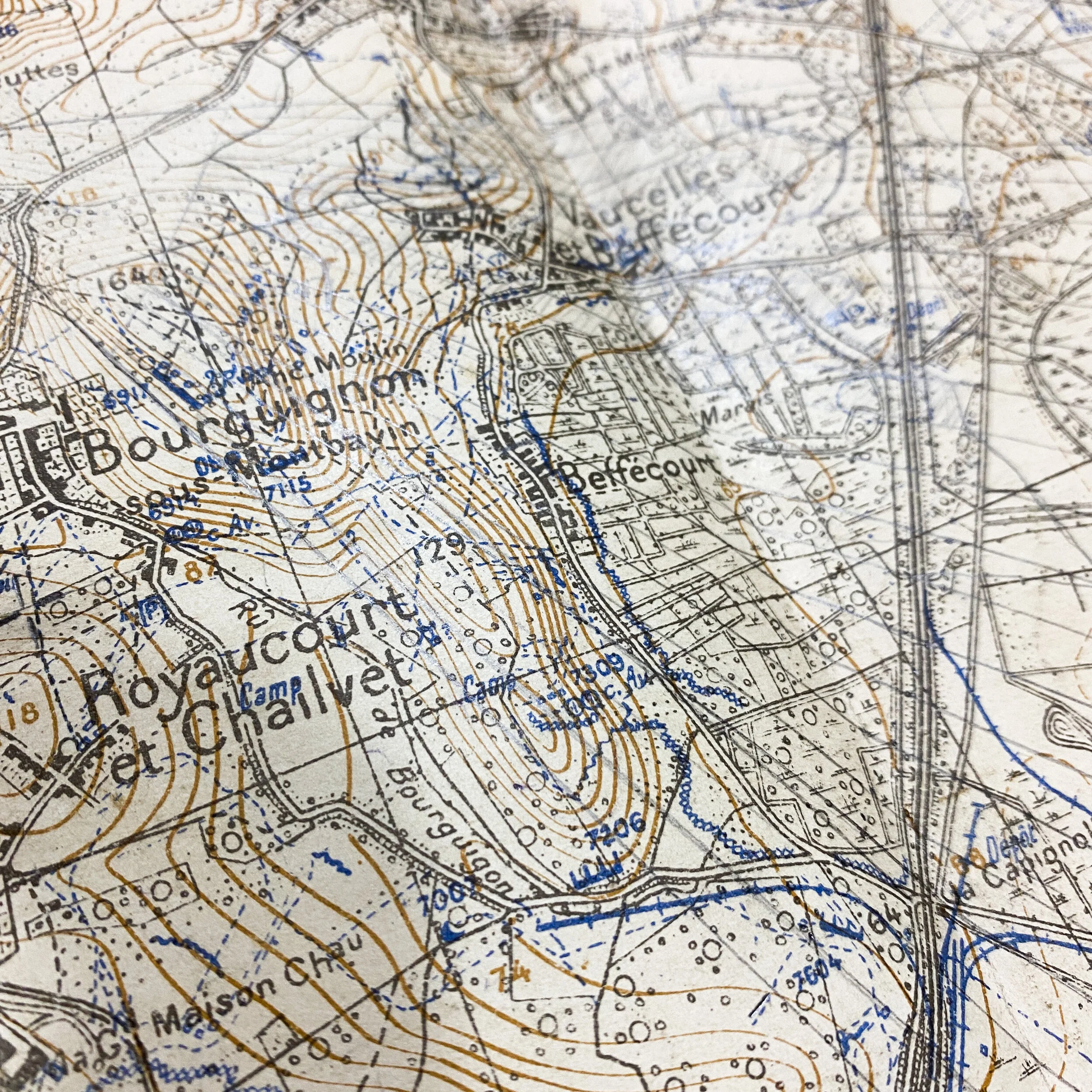
1918 Dated - Aisne Offensive Sector - A.E.F. Used Artillery Map - "Cessièrs" - Signed 1st Lieut.. E. V. McKey Jr. - 134th Field Artillery
Size: 42 x 29.5 inches
This heavily used trench artillery map is dated in big blue letters near the bottom left corner ‘13 Janvier 1918’ (January 13th, 1918) and is titled “Cessieres”. The French map shows elements of trenches, positions of artillery battery, occupied and unoccupied encampments and other important elements of the battlefield. What makes this map so special is the signature and name of 1st Lieut.. E. V. McKey Jr. - 134th F.A. written near the top left of the map. This map is heavily used and shows the handwritten annotations of the artillerymen firing in the particular area. This map details observation post near the village of Pinon overlooking the Forest of Pinon as well as another observation post located near ‘Merlieux et Fouquerolles’. Straight point artillery lines are drawn overlooking various german-occupied sectors with left and right degree annotations, as well as intricate meter markers pre-measured for range fire coordinates. These degree annotations as well as meter marks (labeled left and right in red) would make for quick artillery firing, and easy grid calculations for artillery barrage is in the area. This is a heavily used artillery map from the first World War and shows Allied advancements on the frontline.
The town of Cessieres is located near the village of Loan. This map falls within the Aisne Offensive sector and was most likely used during ‘The Third Battle of the Aisne (French: 3e Bataille de l'Aisne). This offensive push was a battle of the German Spring Offensive during World War I that focused on capturing the Chemin des Dames Ridge before the American Expeditionary Forces arrived completely in France. It was one of a series of offensives, known as the Kaiserschlacht, launched by the Germans in the spring and summer of 1918.
Collection: 1st Lieut.. E. V. McKey Jr. and the 134th Field Artillery.
This exclusive collection of World War I maps are from the bring back collection of 1st Lieut. E. V. McKey Jr. who was an A.E.F. artilleryman and saw extensive combat over the course of WWI serving valiantly with the 37th Infantry Division - 62nd Field Artillery Brigade -134th Field Artillery Regiment. The 62d Field Artillery Brigade - 134th Field Artillery is accredited battle participations in the Marbache sector where they provided extensive fire support and artillery barrages during the Meuse-Argonne offensive as well as the Thiaucourt sector during the St. Mihiel offensive. Many of these maps were used directly by 1st Lieut. E. V. McKey Jr. and his men of the 134th Field Artillery as they provided offensive and defensive fire supporting for the Allies with their 75 mm cannons. The 62nd Field Artillery Brigade is one of the most infamous field artillery unit of World War .
Third Battle of the Aisne:
On the morning of 27 May 1918, the Germans began a bombardment (Feuerwalze) of the Allied front lines with over 4,000 artillery pieces. The British suffered heavy losses, because Duchene was reluctant to abandon the Chemin des Dames ridge, after it had been captured at such cost the previous year, and had ordered them to mass together in the front trenches, in defiance of instructions from the French Commander-in-Chief Henri-Philippe Petain. Huddled together, they made easy artillery targets.
The bombardment was followed by a poison gas drop. Once the gas had lifted, the main infantry assault by 17 German Sturmtruppen divisions commenced, part of an Army Group nominally commanded by Crown Prince Wilhelm, the eldest son of Kaiser Wilhelm II. The Kaiser came to inspect the progress of the battle. He interviewed captured British Brigadier-General Hubert Rees (GOC 150th Brigade, part of 50th Division). The Kaiser was amused to learn that he was Welsh, the same nationality as Lloyd George.
Taken completely by surprise and with their defenses spread thin, the Allies were unable to stop the attack and the German army advanced through a 40 kilometres (25 mi) gap in the Allied lines. Reaching the Aisne in under six hours, the Germans smashed through eight Allied divisions on a line between Reims and Soissons, pushing the Allies back to the river Vesle and gaining an extra 15 km of territory by nightfall.
The rapid advance resulted in the capture of just over 50,000 Allied soldiers and over 800 guns by 30 May 1918, prompting Ludendorff to change the operational objective from merely drawing away the enemy forces from the right wing of the German Army to advancing the attack of the Seventh Army. This had never been the intention of the operation, and having come within 56 kilometres (35 mi) of Paris on 3 June, the German armies were beset by numerous problems, including heavy casualties, a lack of reserves, fatigue and supply shortages.
Ultimately, following many Allied counter-attacks, the German advance came to a halt three days later.